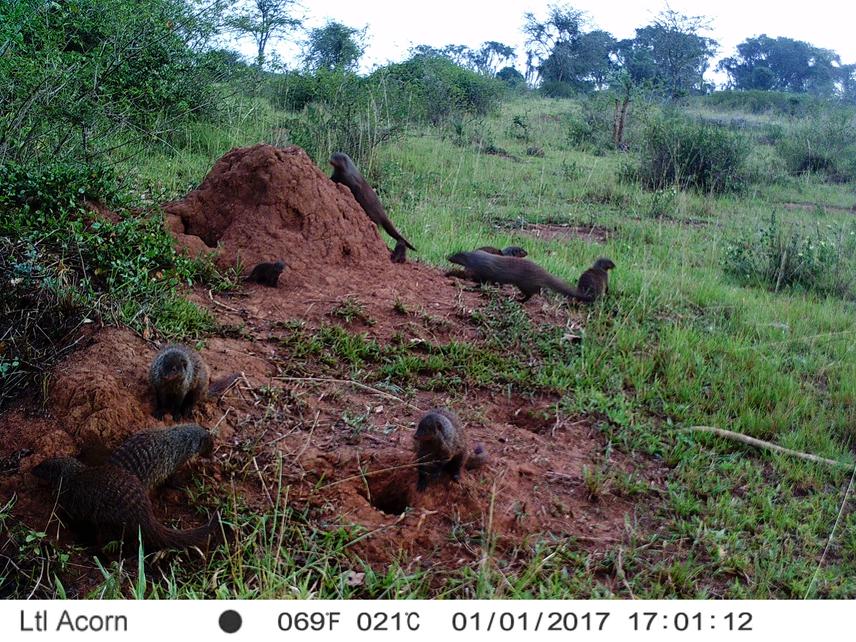Jean Damascene Bariyanga
To assess the impact of different degrees of cattle grazing, hunting and subsistence agriculture on small and medium-sized mammals in degraded rangelands.

Banded Mongoose group.
The Akagera Ecosystem is a unique entity of inter-lacustrine savannah to the West of the Lake Victoria and comprises the Ankole Ranching Scheme (including Lake Mburo NP) in Uganda, the Karagwe grasslands in north-western Tanzania and the Mutara Rangelands (including Akagera NP) in Rwanda. The Mutara harbours large ancient pastoralist communities famous for their enigmatic cattle breed, the Ankole Cattle (Figure 1). In 1997, after genocide and civil war, the government of Rwanda degazetted large parts of the former Akagera NP and the Mutara GR and devoted those areas to returning refugees and their livestock.
Due to close links between pastoral communities, the ecosystems they inhabit, and the animals they breed, pastoralism plays a significant role in the conservation of biodiversity. Pastoralists maintain ecosystem services and health, and preserve an invaluable local ecological knowledge. Through management practices that have evolved in parallel with the local environment, pastoralists retain important species interactions (e.g. herbivory, host-parasite, nutrient cycling), which benefit many wild species of plants and animals. To understand the positive effects of pastoralism on biodiversity in the Mutara, my study aims to assess the impact of different degrees of cattle grazing, hunting and subsistence agriculture on small and medium-sized mammals (ungulates, carnivores, primates). Information will be collected across different zones of conservation-political history, allowing me to look into the past and to assess how ‘time off conservation’ affects wildlife abundance. This work will be beneficial to the conservation of rangeland diversity maintained through traditional pastoralism and, at the same time, encourages pastoralists to maintain their traditional culture.
Until to date, no study has quantified the decline or persistence of wildlife in the Mutara after the conservation status changed. This study will provide information on abundance and distribution of wildlife for the first time and helps to understand the impact of pastoralism and differing conservation status on wildlife and biodiversity. The study will also generate data on the degree and type of human/livestock – wildlife conflicts and will help to assess the impact of different utilization patterns on the mammal fauna. Most important, this study will allow comparing empirical data on the persistence of wildlife obtained from camera trapping with that obtained from local ecological knowledge of indigenous pastoralist communities. This method will enable me to test the reliability and validity of local ecological knowledge, and verify the damage to crops and livestock allegedly caused by wildlife species.